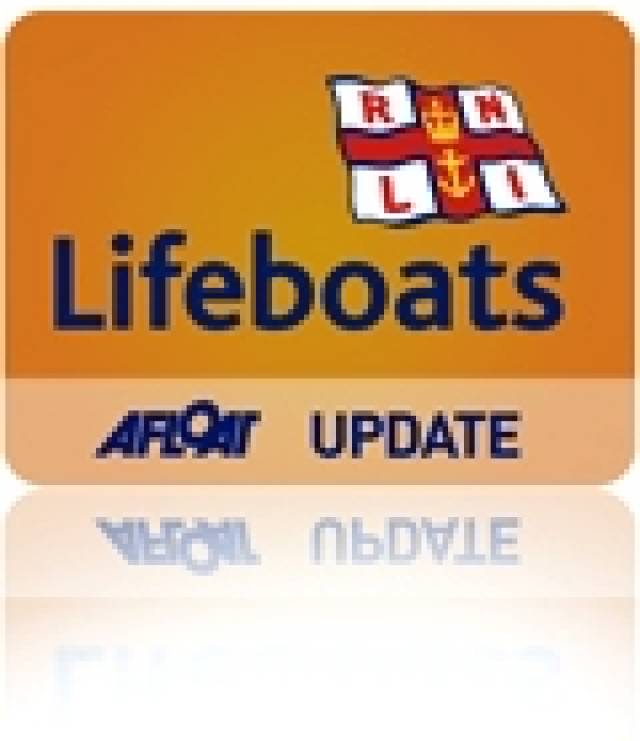#RNLI - Skerries RNLI officially named its new Atlantic 85 lifeboat Louis Simson at a special ceremony held today (Saturday 7 September), as reported yesterday on Afloat.ie.
David Delamer, a member of the Irish Council of the RNLI, accepted the lifeboat and her launching carriage on behalf of the RNLI before handing her over into the care of Skerries Lifeboat Station.
He paid tribute to the donor, Charlotte Simson, who had generously funded the lifeboat through a gift left in her will. The legacy was 75 years old.
Simson, who hailed from Salem in India, funded the lifeboat which has been on service in Skerries since February, in memory of her husband Louis, from London.
"Mrs Simson made provision in her will for a trust fund that would provide various relatives with a modest income for life," Delamer explained. "She arranged that once the trust fund had come to an end, the remaining money should fund an RNLI lifeboat to be named in memory of her beloved husband. Now three quarters of a century on, Mrs Simson’s wish will be granted."
Leo Cody, a founding member of the Skerries RNLI inshore lifeboat station and a former deputy launching authority, then officially named the lifeboat during the ceremony.
The new state-of-the-art Atlantic 85 lifeboat was introduced into the RNLI fleet in 2005. The lifeboat is 8.4 metres in length and weighs 1.8 tonnes. Improvements on its predecessor include a faster top speed of 35 knots, radar, provision for a fourth crew member and more space for survivors.
Since the new lifeboat went on service in Skerries, there have been 24 call-outs and 49 people have been brought to safety.
Niall McGrotty, Skerries RNLI lifeboat operations manager, said the naming ceremony and service of dedication was a special occasion in the history of the Skerries lifeboat station, adding that the volunteer crew was grateful to Simson for her generous legacy which had funded the lifeboat.
He added that the RNLI could not operate its lifeboats without the dedication of volunteer lifeboat crew.
"The crew in Skerries give 100% at all times. Their commitment and ongoing attendance for training both here and at the lifeboat college means that they are highly proficient in the operation of their lifeboat.
"Further testament of the dedication of the crew is their knowledge that they may risk their own lives in the service of others. There is nothing greater that a person could offer and they deserve nothing less than the best lifeboat, equipment and training that money can buy."
McGrotty went on to pay tribute to the vital support provided by the volunteers who support the crew.
"The lifeboat crew and I are only one part of this station. I must mention our operation team, supporters and fundraisers who volunteer their time and efforts and do so much for Skerries RNLI. These are people of all ages who give what time and money they can."
A crowd of well-wishers turned up to see the lifeboat officially named, with a bottle of champagne poured over the side of the boat before it launched at the end of the ceremony.
Among the guests were Des Frazer, president of the Skerries RNLI Lifeboat Management Group, who welcomed guests and opened proceedings; Leo Cody, who back in 1967 was appointed the honorary secretary of the Skerries fundraising branch and is a former deputy launching authority; and Brian Carty, a former crew member, deputy launching authority and chairman, who delivered the vote of thanks.
Father Richard Hyland, Reverend Anthony Kelly and Reverend David Nixon lead the Service of Dedication.
































































